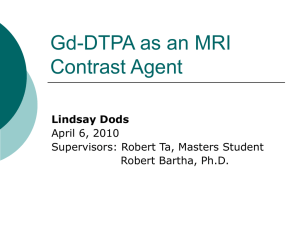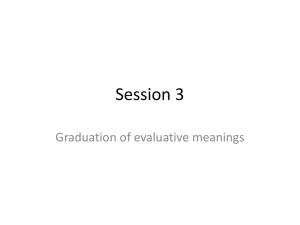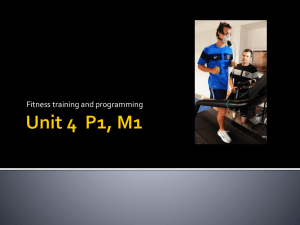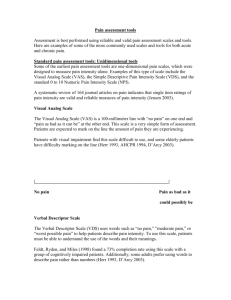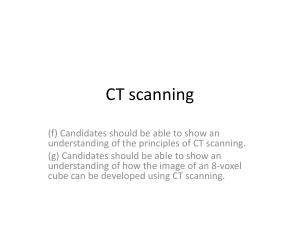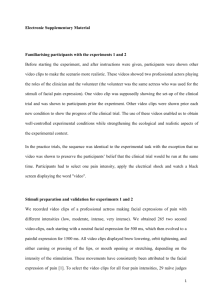Item 4.2. - ERAC Survey final « 746.5KB
advertisement
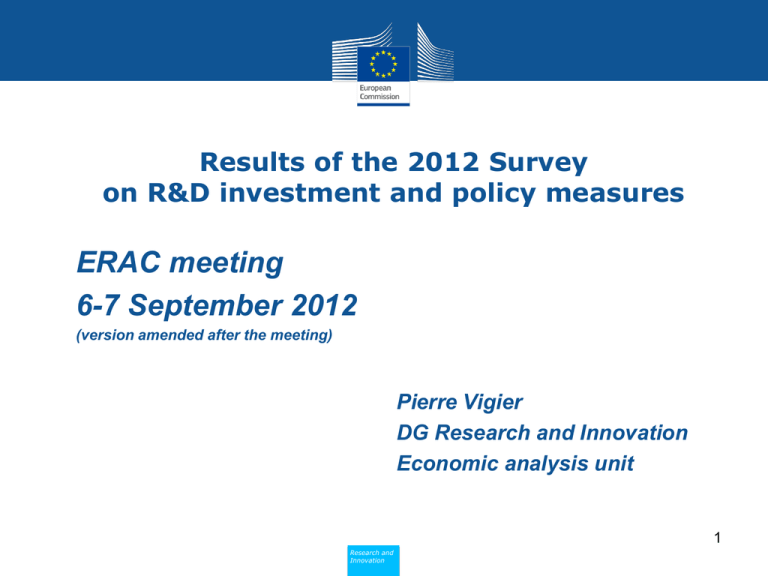
Results of the 2012 Survey on R&D investment and policy measures • ERAC meeting • 6-7 September 2012 • (version amended after the meeting) • Pierre Vigier • DG Research and Innovation • Economic analysis unit 1 Research and Innovation Background ERAC decided on the current survey in October 2011 The 2012 questionnaire was sent to Member States and Associated Countries on 14 May 2012 EC received during June/July 2012 questionnaires completed from 27 Member States and 6 Associated Countries 2 Research and Innovation Member States grouped according to their R&D intensity as % of GDP(reference year 2010) High and medium-high R&D intensity (over 2,5%): AT, DE, DK, FI and SE. Medium R&D intensity (1,6%-2,5%): BE, EE, FR, IE, LU, NL, SI and UK. Medium-low R&D intensity (1%-1,6%): CZ, ES, HU, IT and PT. Low R&D intensity (under 1%): BG, CY, GR, LT, LV, MT, PL, RO and SK. 3 Research and Innovation Member States with R&D intensity higher than 2.5% of GDP (2010) Evolution of Governmental R&D Budgets 2010-2013 (2010 = 100%) 113 Austria 111 109 Sweden 105 Denmark 103 Germany 2010 = 100% 107 101 2010 2011 2012 201399 Finland 97 Source: DG Research and Innovation 95 4 Research and Innovation Member States with R&D intensity between 1.6% and 2.5% of GDP (2010) Evolution of Governmental R&D Budgets 2010-2013 (2010 = 100% ) 130 120 110 Belgium France 100 Netherlands (1) Ireland 100 2010 = 100% Luxembourg Estonia Ne the rlands 90 Slovenia 2010 2012 2011 80 2013 Source: DG Research and Innovation Notes: (1) Netherlands (unbroken line): Foregone tax revenues are included. (2) UK does not project R&D budgets and the executed R&D budget for 2011 is not available yet. 5 Research and Innovation Member States with R&D intensity between 1% and 1.6% of GDP (2010) Evolution of Governmental R&D Budgets 20010-2013 (2010 = 100% ) 140 Hungary 130 Czech Republic 110 100 2010 = 100% 120 Italy 90 80 Portugal Spain 2010 2011 2012 Source: DG Research and Innovation Research and Innovation 70 2013 6 Member States with R&D intensity under 1% of GDP (2010) Source: DG Research and Innovation Note: Data are not available for Greece and Latvia 7 Research and Innovation Policy measures Maintaining / increasing human resources in S&T: • 20 Member States introduced new measures (or strengthened existing ones); • 7 Member States reported no change in their policy; • No information available for one Member State. Structural Funds to RTDI: • 11 Member States indicated a re-allocation of Structural funds to RDTI in 2011-2012; • 10 Member States plan to re-allocate Structural Funds to RTDI funds in 2012-2013. 8 Research and Innovation Policy measures Stimulating private investment in R&D: • 13 Member States have introduced new R&D tax incentives or increased the level of existing ones; • 10 Member States have introduced in the last year tax incentives specifically for SMEs; • 16 Member States have launched grants in support of private R&D investments. Stimulating public – private partnerships (PPP): • 16 Member States have launched a PPP programme in the last year; • 10 Member States are planning to launch a PPP initiative in 2012-2013. 9 Research and Innovation Main conclusions of the 2012 survey (1/2) A diversified landscape across the European Union: • Around a half of Member States increased their public R&D spending in 2011; • Higher R&D intensity Member States have a steady and predictable increase of their R&D efforts even if some of them head towards a negative trend in 2011; • Several medium / medium-low R&D intensity Member States shifted in 2011 to a negative trend; • Many Member States with a low R&D intensity indicated positive evolutions in 2011, some of them coupled with positive expectations for 2012 and 2013. 10 Research and Innovation Main conclusions of the 2012 survey (2/2) Overall, the findings of the survey confirm: • In a difficult economic and fiscal context, many Member States have adopted support measures for R&I and have protected their public R&D spending as part of their efforts to carry out a smart fiscal consolidation; • Further evidence of support measures policies to stimulate private R&D investments and public private partnerships; • Efforts in increasing human resources in S&T; • Preoccupation for an effective usage of Structural Funds in support of research and innovation. 11 Research and Innovation Next steps • The next ERAC survey could be launched mid-2013 • Next results would be expected in Sep-Oct 2013 • Detailed coverage of public efforts: R&D tax incentives and extrabudgetary support • Correlation with results of other surveys: IRIMA annual survey on “R&D Investments Business Trends”, ad-hoc OECD survey etc. http://iri.jrc.es/research/docs/survey/2012/Survey2012.pdf 12 Research and Innovation Methodological remarks Following caveats are needed to be mentioned: - The aim is to consider short term evolution in order to inform Member States on the strategy of the other European countries. This implies that the longer term perspective is not given. For instance, in real terms R&D public investment in EE, PT, SI, DK and FI increased significantly as compared with GDP variation, between 2007 and 2010 included. This relativizes this decrease of actual or planned governmental efforts either in 2011, 2012 or 2013. • - Another issue is the partial shift in some Member States, from governmental direct budget expenditures to support through fiscal incentives. Methodological reasons do not allow comparing yet these values, but the point need to be reminded. • - Last but not least, of course forecasts for 2013 are still subject to revisions in the course of the year. 13 Research and Innovation • Thank you for your attention! 14 Research and Innovation



